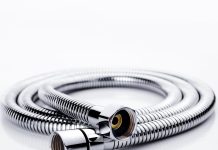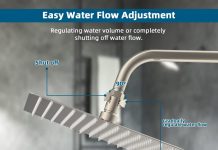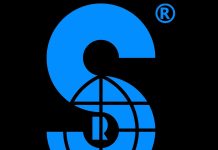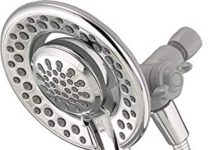If you’re in the market for a new shower hose, you might find yourself wondering whether a low pressure or high pressure option is the better choice. With so many options available, it can be difficult to know which one will provide the best showering experience. In this article, we will explore the differences between low pressure and high pressure shower hoses, and ultimately help you determine which one is the right fit for you. Whether you prefer a gentle and relaxing shower or a powerful and invigorating experience, we’ve got you covered. So, let’s dive in and find the perfect shower hose for your needs!
Table of Contents
Durability of Low Pressure vs High Pressure Shower Hoses
When it comes to the durability of shower hoses, both low pressure and high pressure options have their pros and cons. Low pressure shower hoses are typically made of flexible materials such as nylon or plastic, which can be prone to wear and tear over time. On the other hand, high pressure shower hoses are often constructed with more robust materials like stainless steel or brass, which are known for their durability and resistance to damage.
Low Pressure Shower Hoses
Low pressure shower hoses are commonly found in households with water systems that have limited water pressure. While these hoses may not be as durable as their high pressure counterparts, they are designed to withstand the average water pressure in such systems. However, it is important to note that constant exposure to low water pressure can gradually weaken these hoses, causing them to develop leaks or bursts.
To ensure the longevity of a low pressure shower hose, regular inspection and maintenance are necessary. This can involve checking for any signs of damage, such as cracks or deformation, and promptly replacing the hose if needed. Additionally, avoiding excessive bending or pulling on the hose during installation can help prevent premature wear and tear.
High Pressure Shower Hoses
High pressure shower hoses are a popular choice for those who prefer a more invigorating shower experience. These hoses are designed to withstand increased levels of water pressure without compromising their structural integrity. The use of durable materials like stainless steel or brass enhances their resistance to rust, corrosion, and other forms of damage.
Although high pressure shower hoses are generally more durable than low pressure ones, they are not entirely immune to wear and tear. Over time, constant exposure to high water pressure can cause the inner lining of the hose to weaken or fray. Regular inspection and maintenance are essential to detect any signs of damage early on and prevent further deterioration.
Water Flow Rate Comparison
The water flow rate of a shower hose plays a significant role in determining the quality of the showering experience. The flow rate refers to the volume of water that passes through the hose per unit of time, usually measured in gallons per minute (GPM).
Low Pressure Shower Hoses
As the name suggests, low pressure shower hoses are designed for households with limited water pressure. Due to this, the water flow rate tends to be lower compared to high pressure shower hoses. While this may not suit those who prefer a strong and invigorating shower, low pressure hoses can still provide a gentle and relaxing experience.
The advantage of a lower water flow rate is that it can help conserve water, making it an environmentally friendly option. Additionally, some users may find that a gentle flow of water is more soothing for sensitive skin or for rinsing delicate items. However, it is important to note that the slower flow rate may prolong the time required to rinse off soap or shampoo.
High Pressure Shower Hoses
High pressure shower hoses are designed to deliver a more powerful and invigorating stream of water. With a higher water flow rate, these hoses are able to provide a strong and satisfying shower experience. The increased pressure can help to efficiently rinse off soap and shampoo, making it a popular choice for those who enjoy a brisk and refreshing shower.
While high pressure shower hoses are known for their stronger water flow, it is essential to consider the water pressure in your household. If the water pressure is not sufficient, using a high pressure shower hose may not result in the desired flow rate and could lead to a disappointing experience.
Effectiveness of Showering Experience
The effectiveness of the showering experience is influenced by various factors, including the water pressure, water flow rate, and the overall design of the shower hose. Both low pressure and high pressure shower hoses have their own qualities that contribute to the overall showering experience.
Low Pressure Shower Hoses
For those who prefer a more gentle and relaxing experience, low pressure shower hoses can deliver just that. The lower water flow rate creates a softer stream of water, which can be soothing for sensitive skin or for rinsing delicate items. This type of hose is also suitable for households with limited water pressure, as it can optimize the available water flow.
However, some users may find that the lower water pressure can prolong the time required to rinse off soap or shampoo. Additionally, if a thorough and invigorating shower is preferred, a low pressure shower hose may not provide the desired level of satisfaction.
High Pressure Shower Hoses
High pressure shower hoses are designed to deliver a powerful and invigorating shower experience. The increased water pressure and flow rate can help efficiently rinse off soap and shampoo, resulting in a refreshing and satisfying shower. This type of hose is particularly popular among individuals who enjoy a brisk and invigorating start to their day or those who are looking for a revitalizing shower experience.
However, it is important to consider the water pressure in your household. If the water pressure is not sufficient, the high pressure shower hose may not achieve the desired flow rate, compromising the effectiveness of the showering experience. It is recommended to consult a professional plumber to assess the water pressure in your home and determine the suitability of a high pressure shower hose.
Ease of Installation
The ease of installation is an important aspect to consider when choosing between low pressure and high pressure shower hoses. A quick and hassle-free installation process can save time and effort, ensuring that you can enjoy your new shower hose promptly.
Low Pressure Shower Hoses
Low pressure shower hoses are generally easy to install, as they are designed for households with limited water pressure. These hoses often come with standard fittings that can be easily attached to the showerhead and the water supply without the need for additional tools or expertise. The flexible nature of low pressure hoses also enables them to be maneuvered and adjusted to fit the desired position and height.
High Pressure Shower Hoses
High pressure shower hoses may require more careful installation due to their specialized design and construction. These hoses are often sturdier and heavier than low pressure options, which may require additional support or reinforcement to ensure proper installation. It is recommended to follow the manufacturer’s instructions or consult a professional plumber to ensure the correct installation of a high pressure shower hose.
Compatibility with Different Showerheads
The compatibility between shower hoses and showerheads is an important consideration when selecting the right hose for your bathroom. Ensuring that the hose and showerhead can be effectively connected is essential for a seamless and functional showering experience.
Low Pressure Shower Hoses
Low pressure shower hoses are generally designed to be compatible with a wide range of showerheads. These hoses often come with standard fittings that can be easily attached to most showerheads without the need for additional adapters or modifications. The flexibility of the materials used in low pressure hoses also allows them to adapt to different showerhead angles and positions.
However, it is important to verify the compatibility between the hose and showerhead before making a purchase. Some showerheads may have unique fittings or specifications that require specific adapters or connectors. Consulting with a professional plumber or referring to the manufacturer’s guidelines can help ensure compatibility and avoid any issues during installation.
High Pressure Shower Hoses
High pressure shower hoses are also typically designed to be compatible with a range of showerheads. However, due to their specialized construction and potentially heavier weight, it is important to ensure that the showerhead can support the high pressure hose. Some showerheads may have weight limitations or require additional reinforcement to accommodate the high pressure hose.
Similar to low pressure hoses, it is recommended to consult with a professional plumber or refer to the manufacturer’s guidelines to ensure compatibility and proper installation of a high pressure shower hose.
Cleaning and Maintenance
Proper cleaning and maintenance of shower hoses are essential to ensure their longevity and functionality. This includes regular cleaning to prevent the buildup of dirt, grime, or mineral deposits, as well as inspecting for any signs of damage or wear.
Low Pressure Shower Hoses
Cleaning low pressure shower hoses is relatively simple and straightforward. Regularly rinsing the hose with warm water can help remove any dirt or soap residue. For more stubborn stains or mineral deposits, a mixture of warm water and mild soap can be used to gently scrub the hose. Avoid using abrasive cleaners or harsh chemicals, as they can damage the hose material.
Inspecting the hose for any signs of damage, such as cracks, leaks, or deformation, is also important. If any issues are detected, it is recommended to replace the hose promptly to prevent further deterioration and potential water leakage.
High Pressure Shower Hoses
High pressure shower hoses may require similar cleaning and maintenance as low pressure hoses. Regular rinsing and gentle scrubbing with warm water and mild soap can help to remove dirt and soap residue. However, due to the increased water pressure, there may be a higher likelihood of mineral deposits or debris accumulating within the hose.
To remove mineral deposits or debris, soaking the high pressure hose in a vinegar and water solution can be effective. This solution helps to dissolve mineral deposits and restore the flow of water. It is important to thoroughly rinse the hose after soaking and ensure that no vinegar residue remains.
Cost Comparison
The cost of shower hoses can vary depending on factors such as materials, brand reputation, and additional features. It is important to consider not only the upfront cost but also the long-term value and durability of the hose.
Low Pressure Shower Hoses
Low pressure shower hoses are generally more affordable compared to their high pressure counterparts. The use of flexible materials like nylon or plastic contributes to the lower cost of production, which is reflected in the price of the hose. While low pressure hoses may not be as durable as high pressure ones, they still offer a cost-effective option for households with limited water pressure.
High Pressure Shower Hoses
High pressure shower hoses are typically more expensive than low pressure options. The use of sturdier materials like stainless steel or brass, coupled with their ability to withstand increased water pressure, contributes to the higher cost. However, the durability and long-term value of high pressure hoses often justify the higher price, especially for those who prioritize a powerful and invigorating showering experience.
Environmental Impact
The environmental impact of shower hoses is an important consideration in today’s world where sustainability is increasingly valued. Choosing a shower hose that promotes water conservation and reduces waste can contribute to a greener and more environmentally friendly lifestyle.
Low Pressure Shower Hoses
Low pressure shower hoses can be considered more environmentally friendly compared to high pressure ones, as they typically have a lower water flow rate. The reduced water flow helps to conserve water, which is especially important in areas where water resources are scarce or water restrictions are in place. By using a low pressure hose, individuals can contribute to water conservation efforts without compromising their showering experience.
High Pressure Shower Hoses
While high pressure shower hoses may use more water due to their higher flow rate, they can still be environmentally friendly if used consciously. By being mindful of water usage and adopting efficient showering habits, individuals can minimize water waste even with a high pressure shower hose. Additionally, the increased effectiveness of rinsing afforded by high pressure hoses may result in shorter showering times, further reducing water consumption.
It is important to note that regardless of the type of shower hose chosen, regular maintenance to detect and repair any leaks or issues is necessary to prevent unnecessary water waste.
Noise Level
The noise level produced by shower hoses can vary depending on factors such as water pressure, hose construction, and the materials used. Consideration of noise levels is particularly important for individuals who prefer a quiet and peaceful showering experience.
Low Pressure Shower Hoses
Low pressure shower hoses generally produce less noise compared to high pressure hoses. The lower water flow rate and gentler stream of water contribute to a quieter showering experience. This can be beneficial for individuals who value a peaceful and relaxing shower without being disturbed by excessive noise.
High Pressure Shower Hoses
High pressure shower hoses may produce more noise compared to low pressure options, primarily due to the higher water flow rate. The increased force of water can create a louder and more powerful sound. However, the noise level can also be influenced by factors such as the design of the showerhead and the materials used in the construction of the hose.
If noise level is a concern, it is advisable to explore options that incorporate noise-reducing features or consider using additional soundproofing measures in the bathroom.
Common Problems and Solutions
Like any household fixture, shower hoses can encounter common problems that may affect their functionality and performance. Being aware of these issues and their solutions can help address them promptly and ensure a smooth showering experience.
Leaks
Leaks are a common issue that can occur in both low pressure and high pressure shower hoses. They can be caused by various factors such as wear and tear, loose fittings, or cracks in the hose. If a leak is detected, it is important to identify the source and promptly address it to prevent water wastage and potential damage to surrounding areas.
For minor leaks, tightening the fittings or applying plumber’s tape around the connections may be sufficient to stop the leak. However, if the leak persists or is more severe, it is recommended to replace the hose or seek professional assistance for proper repair or replacement.
Blockages
Blockages can occur in shower hoses due to the accumulation of debris, mineral deposits, or soap residue. When a blockage occurs, it can reduce the water flow rate and disrupt the showering experience. To address this issue, it is recommended to detach the shower hose from the showerhead and water supply and flush it with warm water.
For more stubborn blockages, soaking the shower hose in a vinegar and water solution can help dissolve mineral deposits or soap residue. It is important to thoroughly rinse the hose after soaking and ensure that no vinegar residue remains.
Bursting
In rare cases, shower hoses can experience bursting, particularly if they are exposed to high water pressure or have weakened over time. Bursting can cause significant water damage and inconvenience. To minimize the risk of bursting, it is important to choose a shower hose that is compatible with the water pressure in your household and to regularly inspect the hose for any signs of damage.
If a shower hose bursts, it is essential to immediately stop the water supply to prevent further damage and seek professional assistance to repair or replace the hose.
In conclusion, both low pressure and high pressure shower hoses have their own advantages and considerations. Understanding the durability, water flow rate, effectiveness of the showering experience, ease of installation, compatibility with different showerheads, cleaning and maintenance requirements, cost, environmental impact, noise level, and common problems and solutions associated with each type of hose can help guide you in selecting the most suitable option for your needs. Whether you prioritize a gentle and relaxing shower or a powerful and invigorating experience, there is a shower hose available to enhance your showering routine.






















